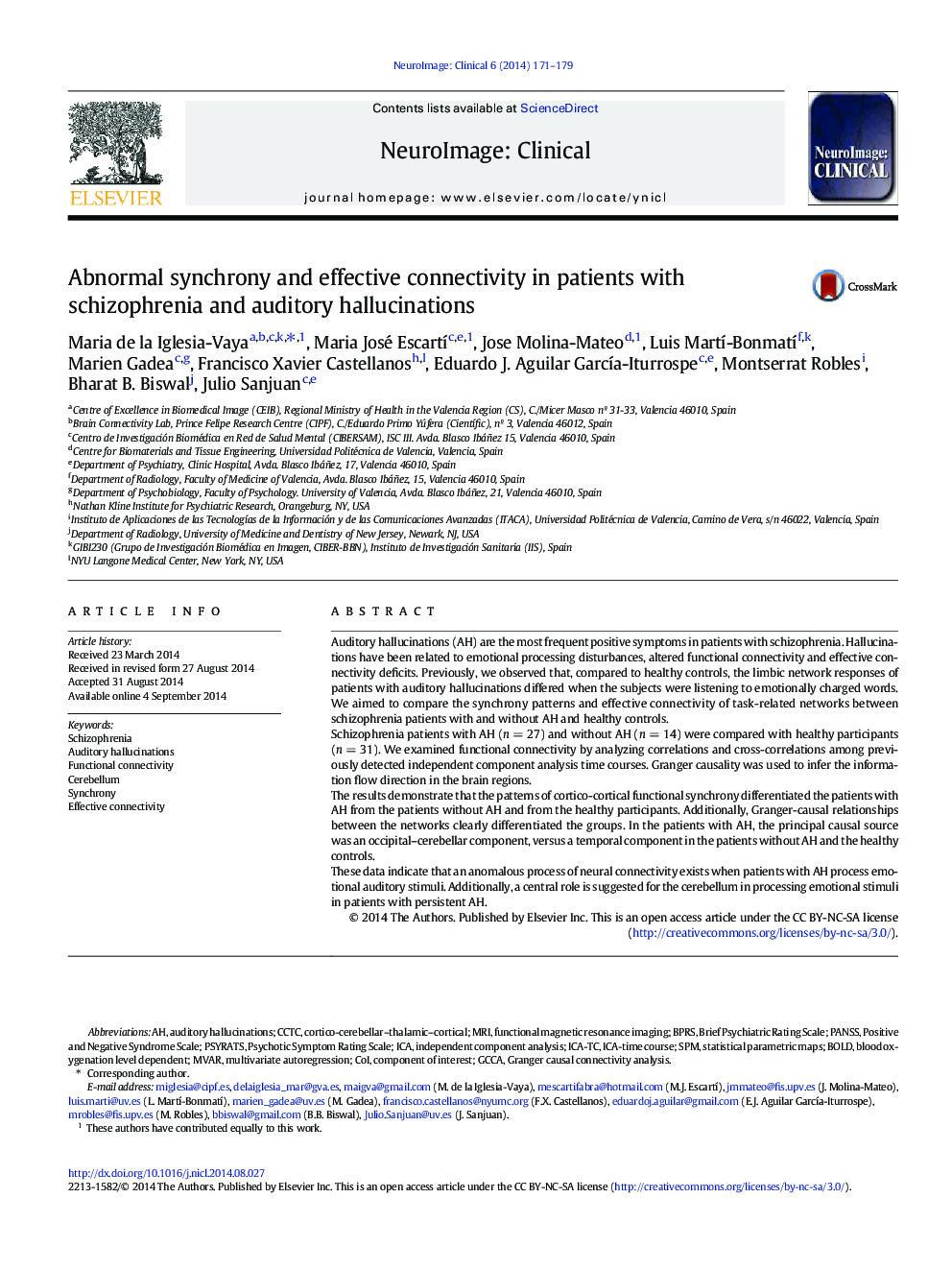| کد مقاله | کد نشریه | سال انتشار | مقاله انگلیسی | نسخه تمام متن |
|---|---|---|---|---|
| 3075239 | 1580961 | 2014 | 9 صفحه PDF | دانلود رایگان |
• Schizophrenia is thought to reflect subtle dysfunctions in connectivity.
• We analyze differences in functional and effective connectivity among groups.
• The patterns of cortico-cortical functional synchrony are different among groups.
• Granger-causal relationships between networks also clearly differentiated the groups.
• These data implicate an anomalous process of neural connectivity.
Auditory hallucinations (AH) are the most frequent positive symptoms in patients with schizophrenia. Hallucinations have been related to emotional processing disturbances, altered functional connectivity and effective connectivity deficits. Previously, we observed that, compared to healthy controls, the limbic network responses of patients with auditory hallucinations differed when the subjects were listening to emotionally charged words. We aimed to compare the synchrony patterns and effective connectivity of task-related networks between schizophrenia patients with and without AH and healthy controls.Schizophrenia patients with AH (n = 27) and without AH (n = 14) were compared with healthy participants (n = 31). We examined functional connectivity by analyzing correlations and cross-correlations among previously detected independent component analysis time courses. Granger causality was used to infer the information flow direction in the brain regions.The results demonstrate that the patterns of cortico-cortical functional synchrony differentiated the patients with AH from the patients without AH and from the healthy participants. Additionally, Granger-causal relationships between the networks clearly differentiated the groups. In the patients with AH, the principal causal source was an occipital–cerebellar component, versus a temporal component in the patients without AH and the healthy controls.These data indicate that an anomalous process of neural connectivity exists when patients with AH process emotional auditory stimuli. Additionally, a central role is suggested for the cerebellum in processing emotional stimuli in patients with persistent AH.
Figure optionsDownload as PowerPoint slide
Journal: NeuroImage: Clinical - Volume 6, 2014, Pages 171–179
